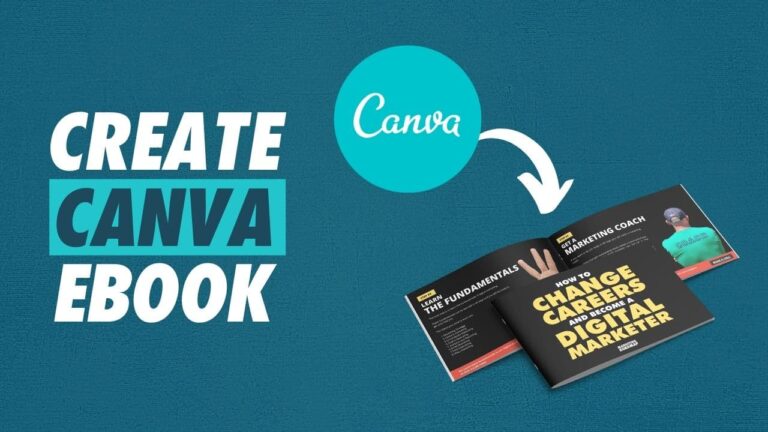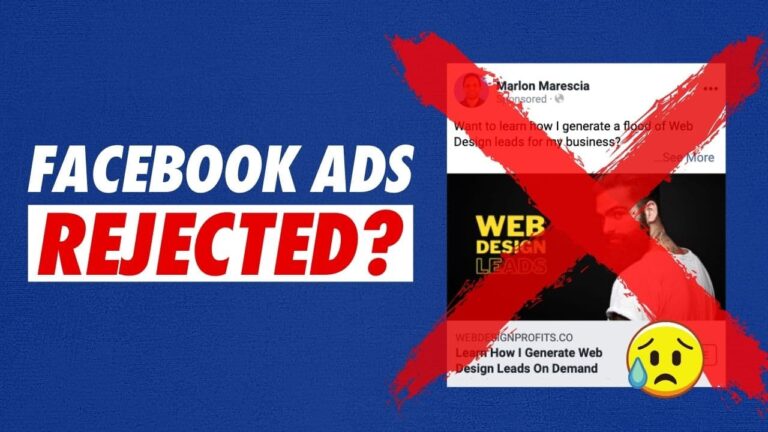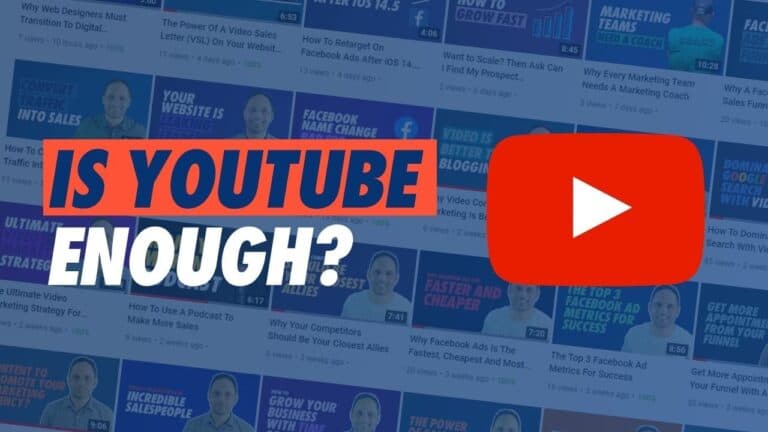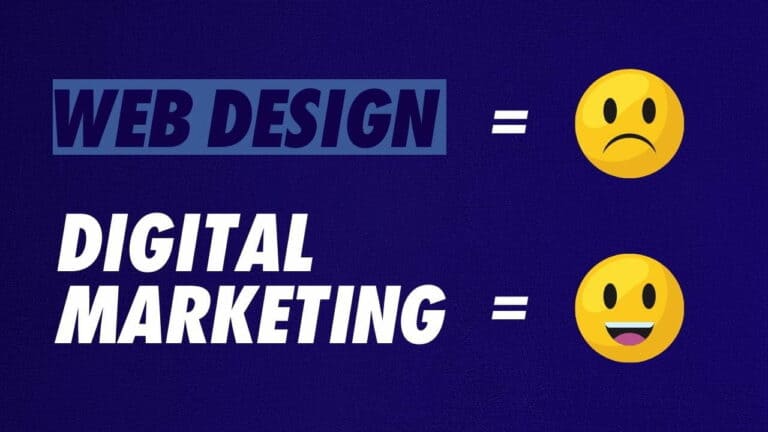Facebook Ads are very easy to make profitable if you know what you are doing.
There is a graveyard of businesses who have failed at Facebook Ads and say Facebook doesn’t work.
But Facebook does work and it is quite easy to find success if you know how to manipulate 3 Metrics only.
In this video, I explain the 3 metrics I know will cause 90% of the success of a campaign.
Once you know what they are and how to use them your Facebook Ads campaign will skyrocket in success.
Want more tips like this?
Join our Facebook Group made for business owners who want to scale their business.
Go to https://www.facebook.com/groups/1146000482481372
If you’ve ever run a Facebook ads campaign, you’ve probably launched the campaign and it didn’t work or it wasn’t getting the leads or the sales you wanted, and then you might’ve been stuck and you’re not sure what to do. So instead of optimizing the campaign, you just shut the campaign down. But today I’m going to show you exactly what you need to do to optimize a poorly converting campaign, to make it super successful.
There’s only three Facebook ad metrics that I use to optimize campaigns. And every time I optimize these three metrics, it normally gets the campaign working. It’s highly successful. And so today’s video, I’m going to show you exactly how it’s done.
All right. So Facebook ads, I am a firm believer that Facebook ads is one of the best ways to grow your business.
It’s the best and cheapest and quickest way to get lots of leads that you can then follow up by phone or email, or you can get someone to book an appointment through emails and SMSes, so you can then have a sales conversation with them. But the problem is. Many businesses who run Facebook ads can’t even get the lead.
They can’t even get someone to submit their details. And there’s many reasons why, but today I’m going to show you the top three metrics you should look at, at a Facebook ads campaign. That if you fix these three metrics and get them working, you will get the campaign working. And typically you will be able to get leads and some sales, and then you can move on and scale it out.
Let’s go to the computer and let’s have a look at this campaign. So here’s a campaign that has been running. It’s one of the students in my coaching program and we just launched it recently. And what they’re giving away is an Ebook. It’s an ebook or cheat sheet on Facebook.
The business owner will click the ad. Will go to a landing page where they can actually see the Ebook and then I can submit their details. And then when I submit their details, they’ll be able to then get the Ebook. That’s it. Generate a lead, okay. Pretty simple. The problem is a lot of businesses put these ads up and they can’t actually generate a lead.
Let me show you, the metrics I look at. Now, this campaign is running very well, okay. And I’ll tell you why it’s running well. If you look all the way to the end, you’ll say that the cost per lead over here is $2.93. And so $2.93 for a lead is pretty good. Right? Every time someone fills in the form, that’s qualified as a lead, I have their phone number, their email address, and their name.
And then the business then calls that person to tries to book an appointment. And they’ve had a huge amount of success. I think in the first 30 leads they got, you can see they have 71 leads right now. But in the first 30 leads they got, they called the first 14 people. Two people didn’t pick up, two didn’t qualify and they booked 19 appointments in their calendar.
That cost them about $60 for those 30 leads. That’s pretty good if you’re a business or you’re marketing agency or a coach or a consultant, an accountant, and you want more leads, pretty cheap, isn’t it? $60 to get that many leads. But right now they have 71 leads, right? Now, the conversion rate on the landing page, the landing page conversion rate is an interesting number.
This is the first number I look at.
So if you look here and you say cost, let’s just crawl across here and look at link clicks. So they’ve had 491 link clicks and they have had 71 leads, sorry, 400. Let me do that again. They have 491 link clicks and then they’ve had 407 people hit the landing page. They’ve lost about 90 people, right?
That’s not too bad. That’s because someone has either clicked and just abandoned. You know, they were on a mobile phone that’s dropped out of abandoned it many reasons for that. If that number is about 50, 50, you’re in trouble, if there’s a 50 so 491 sign up at 200, drop-off, don’t make it. That’s bad. This is pretty good. But the number I’m looking at is the number of leads 71 divided by landing page view.
How many people actually hit the landing page and how many signed up? That’s 17.44%, that conversion rate. That’s the first number. If that is between fifteen and 50%, you’re doing pretty good, okay. This is at 17 and we’re still doing really well. The cost per lead is $2.93. If we could double this and go from 17% to say 35%, we would then double the leads.
That’s how we can figure it out. If this conversion rate was at 5%, I would say. The landing page is the problem because they’re hitting the landing page and they’re not signing up. And so if I have this many people hit a landing page and 95% of signing up and the 5% sign up, that’s about three times more.
It’s costing us about $9 a lead, that’s too much money. I would say there’s an issue with the landing page. So the conversion rate, this landing page conversion rate is the first number I look at, okay. If it’s between 15 and 50, it’s pretty good. If this number is too high, then this is low at five to seven, .10%.
I would say that I can fix this here. And then I can increase the conversion rate, get more leads. The next number is the click-through rate. The click-through rate here, click-through rate. This means for every 100 people that see the ad, how many actually click the ad? Okay. And so this is 3.34%. The goal is 1% click-through rate.
Every 100 people that see the ad one person should click the ad. This is three and a half times greater. Then what we would expect. So this means the ad is good. So people like the ad they’re clicking on the ad three and a half times more than what they do if it’s just an average ad. So it’s an amazing ad, okay.
So this isn’t a problem for them, but if you have a click-through rate less than 1%, what you need to fix now is not the landing page. You need to fix the ad, okay. Now that this one is above 3.34%, that’s fine. We can leave it and let’s move on. What’s the third number we need to look at? The third number is the CPM.
This is how much does it cost to show your ad to a thousand people? At the moment they’re paying $14.17 cents. That is very cheap. Now, typically with my campaigns, I will pay anywhere from fifty to $120. Let’s just say I’m paying $50, that’s three times more than what they’re paying here. If that’s three times more, that means the cost per lead is three times more.
That’s $9 a lead. Can you see how these numbers affect the cost per lead? So if my CPM is three times more, my cost per lead is three times more. Now, what can affect the CPM? Now your CPM can be high. That’s Facebook making this decision. You can’t do a lot about it, except a couple of things. Firstly, If your CPM’s high, it’s typically because you’re targeting an audience that is very popular.
So the cost goes up, supply and demand. Maybe your ad quality is very low. And so Facebook’s like, we don’t want to show this to people so we’ll just charge you more. We’ll be fair. we’ll show it to you but we’ll charge you more. Facebook wants to show good ads that people like, so that they stay on the platform. I’ll still show you the ad, but they’ll just charge you a premium.
That could be it. And there could be just an issue with Facebook. So just what you do to get this campaign with the lowest CPM is sometimes just turn the campaign off and kickstart it started. And that will typically bring it down. Sometimes Facebook gets in a bit of a rut. They’re the three numbers.
The first one is landing page conversion rate. How many people are landing on the page and how many are signing up? If that is less than 15% or too low, then you need to fix your landing page. The second one is click-through, rate. If your click-through rate is less than 1%, then you need to change your ad, make it more attractive for people to click, like the offer better.
And then finally it’s CPM. If we scroll along here, CPM is the cost to show your ad to a thousand, a thousand times. If that’s too high, if that’s fifty, a hundred, a hundred and twenty, $200, that is going to cost you too much to get a conversion and you need to kickstart the campaign, change the ad or change your targeting.
Choose a different audience, that’s not too small or not too targeted. So if you want to have a Facebook ads campaign, this is basically what I do on every single campaign I run. Every campaign I run, I’d go through this process. Typically I’ll have a campaign that’s not doing well when I launch it, I’ll just check. Look at these three numbers. I’ll first change the ad if the click-through rates low. I’ll then change the landing page if the conversion rates low. If I have to change the CPM, I’ll kickstart it or I’ll change the audience. That’s it. Pretty easy, but you got to be consistent. I hope you enjoyed that. I hope you learned something.
Go ahead and make updates to your campaigns and keep optimizing until you get it right. It’s not Facebook that’s the problem. I like to say it’s you, you’re the problem. Not Facebook. Facebook is an amazing platform. Have a great day. I’ll see you next time. Bye.




